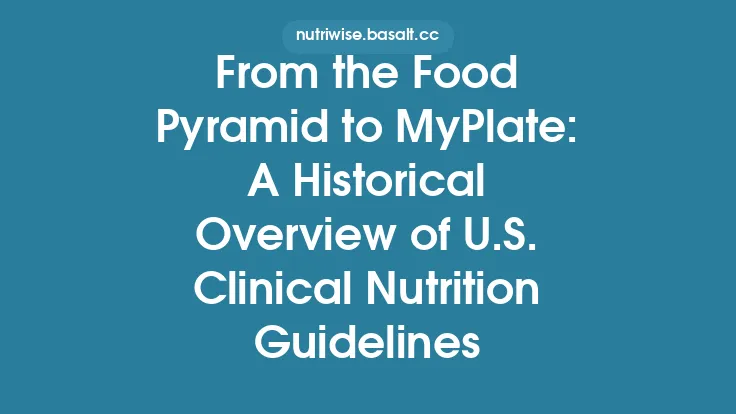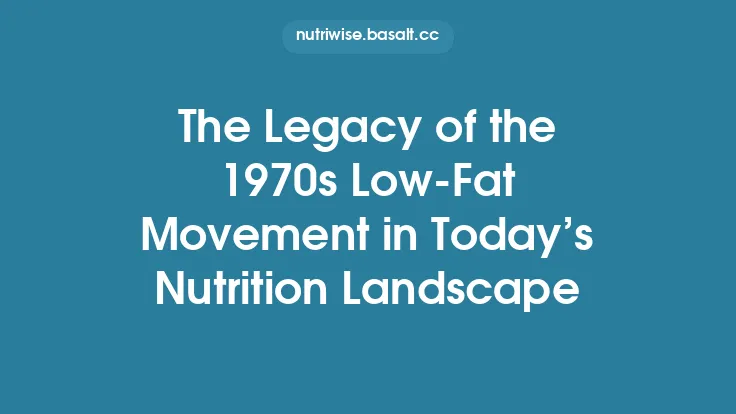The relationship between culture and food has always been a two‑way street: societies shape what they eat, and the foods they consume, in turn, shape their societies. Over millennia, entire dietary patterns have risen to prominence, become symbols of health and status, and eventually faded—sometimes replaced by new regimes, sometimes by the very same foods re‑interpreted in a different context. By examining these historical diets through the lenses of archaeology, paleopathology, and textual analysis, we can extract timeless lessons about nutrition, sustainability, and the social forces that drive change.
Defining Historical Diets
A “historical diet” is more than a list of foods; it is a coherent set of eating practices that includes:
- Food selection – the range of edible items considered acceptable, whether cultivated, wild, or imported.
- Meal structure – typical number of meals, timing, and portioning.
- Culinary philosophy – cultural or philosophical rationales (e.g., humoral theory, religious fasting, or class‑based etiquette).
- Nutrient balance – the macronutrient (carbohydrate, protein, fat) and micronutrient (vitamins, minerals) profile that results from the above choices.
When scholars reconstruct a diet, they aim to capture this holistic picture, not merely the staple grain or the most common protein source.
Methodological Approaches to Reconstructing Past Nutrition
1. Bioarchaeological Evidence
- Stable isotope analysis (δ¹³C, δ¹⁵N) of bone collagen reveals the proportion of C₃ vs. C₄ plants and the trophic level of protein consumed.
- Dental microwear and enamel isotopes provide short‑term snapshots of carbohydrate vs. protein intake.
- Trace element concentrations (e.g., zinc, iron, calcium) can indicate deficiencies or excesses.
2. Residue Chemistry
Lipids, starches, and phytoliths preserved in pottery or grinding stones are identified through gas chromatography–mass spectrometry (GC‑MS). This technique can differentiate between animal fats, plant oils, and fermented products.
3. Textual and Iconographic Sources
Cookbooks, medical treatises, religious texts, and frescoes often list permitted foods, recommended combinations, and moral judgments about eating. While these sources reflect elite perspectives, they are invaluable for understanding the *ideological* framework of a diet.
4. Experimental Archaeology
Recreating ancient recipes under controlled conditions allows researchers to assess digestibility, glycemic response, and the impact of traditional preparation methods (e.g., fermentation, soaking) on nutrient bioavailability.
By triangulating these methods, scholars can move beyond speculation to a data‑driven portrait of historical nutrition.
Case Studies of Prominent Historical Diets
The Classical Mediterranean Diet of Antiquity
Geographic scope: Coastal Greece, Southern Italy, and the Levant (c. 800 BCE – 200 CE).
Core components:
- Cereals: Primarily barley and emmer wheat, often prepared as flatbreads or porridge.
- Legumes: Lentils, chickpeas, and broad beans supplied plant protein and fiber.
- Olive oil: The dominant fat source, rich in monounsaturated fatty acids (MUFA) and polyphenols.
- Fruits & vegetables: Grapes, figs, olives, onions, and leafy greens contributed vitamins A, C, K, and potassium.
- Fish & seafood: Regular consumption of small oily fish (e.g., sardines) supplied omega‑3 fatty acids and vitamin D.
- Wine: Diluted wine was a daily beverage, providing polyphenols and modest caloric content.
Nutrient profile: Roughly 55 % carbohydrate, 15 % protein, 30 % fat, with a high MUFA/PUFA ratio and abundant micronutrients (magnesium, calcium, iron).
Health outcomes: Skeletal remains show relatively low prevalence of atherosclerotic lesions and dental caries compared with contemporary northern European populations.
Decline factors: The rise of the Roman Empire’s grain‑import economy shifted reliance toward refined wheat flour, reducing whole‑grain intake and increasing refined carbohydrate consumption. Additionally, the spread of Christianity introduced fasting periods that altered meal patterns, eventually giving way to medieval feasting customs that emphasized meat and butter.
The Medieval European Diet
Geographic scope: Western and Central Europe (c. 500 – 1500 CE).
Core components:
- Cereals: Rye, oats, and later refined wheat for the elite; coarse breads for peasants.
- Legumes: Peas and beans were essential protein sources for lower classes.
- Animal products: Pork, beef, and dairy (cheese, butter) were more prevalent among the nobility; peasants relied on occasional pork or preserved fish.
- Seasonal vegetables: Cabbage, turnips, and carrots; limited fruit consumption due to preservation constraints.
- Spices and sweeteners: Limited to the wealthy; most meals were unsweetened.
Nutrient profile: Carbohydrate‑heavy (≈65 %), low protein (≈10 %), moderate fat (≈25 %). Micronutrient deficiencies (vitamin C, iron) were common, especially during winter months.
Health outcomes: High rates of anemia, scurvy, and rickets are documented in skeletal remains, reflecting seasonal nutrient gaps.
Decline factors: The Black Death (1347–1351) dramatically reduced the labor force, leading to higher wages for peasants and a gradual shift toward more diversified diets. The later Columbian Exchange introduced new staple crops (potatoes, maize) that would eventually transform European nutrition.
Imperial Chinese Court Cuisine (Tang–Ming Dynasties)
Geographic scope: Imperial capitals (Chang’an, Kaifeng, Beijing) from the 7th to 16th centuries.
Core components:
- Rice and millet: Primary carbohydrate sources, with rice becoming dominant in the south.
- Soy products: Tofu, soy sauce, and fermented bean curd supplied high‑quality plant protein and essential amino acids.
- Tea: Consumed daily, providing antioxidants (catechins) and modest caffeine.
- Game and poultry: Duck, pheasant, and occasional wild boar offered lean protein.
- Medicinal foods: Integration of “food as medicine” (e.g., goji berries, ginseng) reflected Daoist and Confucian health philosophies.
Nutrient profile: Balanced macronutrients (≈50 % carbohydrate, 20 % protein, 30 % fat) with a high intake of phytonutrients and low saturated fat.
Health outcomes: Historical medical texts report low incidence of gout and cardiovascular disease among the elite, though the lower classes suffered from protein deficiency.
Decline factors: The Ming dynasty’s emphasis on self‑sufficiency and the later influx of New World crops (sweet potatoes, corn) altered staple consumption patterns, reducing reliance on rice in some regions and shifting the overall dietary balance.
The Ayurvedic Dietary Paradigm (Classical India)
Geographic scope: Indian subcontinent (c. 500 BCE – 1500 CE).
Core components:
- Grains: Barley, millet, and rice, often prepared as porridges (kheer) or flatbreads (roti).
- Legumes: Lentils, mung beans, and chickpeas, integral for protein and B‑vitamins.
- Dairy: Ghee (clarified butter) and yogurt, used both as cooking media and therapeutic agents.
- Spices and herbs: Turmeric, cumin, coriander, and ginger, valued for digestive and anti‑inflammatory properties.
- Fasting and seasonal eating: Prescribed cycles (e.g., “Ritu” diet) aligned food choices with climatic conditions.
Nutrient profile: Moderate carbohydrate (≈55 %), high protein (≈20 % from legumes and dairy), and balanced fat (≈25 % from ghee and oil). Rich in antioxidants and phytochemicals.
Health outcomes: Textual evidence suggests low prevalence of chronic inflammatory diseases among those adhering to Ayurvedic guidelines, though archaeological data on the general population remain limited.
Decline factors: Colonial economic policies disrupted traditional grain production, promoting cash crops (cotton, indigo) over subsistence cereals. Urban migration and the rise of processed foods in the 20th century further eroded the Ayurvedic food system.
The Viking Nutritional Model
Geographic scope: Scandinavia and North Atlantic settlements (c. 800 – 1100 CE).
Core components:
- Cereals: Barley and rye, often fermented into porridge or flatbread.
- Seafood: Herring, cod, and shellfish provided omega‑3 fatty acids and vitamin D.
- Livestock: Sheep, goats, and cattle supplied meat, milk, and cheese; pork was a luxury.
- Wild foraged foods: Berries, nuts, and wild greens added vitamins C and K.
- Preservation: Fermentation and drying extended the shelf life of fish and meat, enhancing probiotic intake.
Nutrient profile: Roughly 45 % carbohydrate, 25 % protein, 30 % fat, with a high omega‑3 to omega‑6 ratio due to marine foods.
Health outcomes: Skeletal analyses reveal relatively robust bone density and low incidence of cardiovascular calcification, likely linked to the high intake of marine omega‑3s.
Decline factors: The transition to agrarian feudal societies reduced reliance on marine resources, while the introduction of refined grain imports in later centuries shifted the macronutrient balance toward higher carbohydrate, lower omega‑3 intake.
Common Drivers Behind the Rise and Fall of Historical Diets
| Driver | Mechanism | Illustrative Example |
|---|---|---|
| Environmental Change | Climate shifts alter crop viability and animal herd productivity. | The Medieval European reliance on rye in northern latitudes versus wheat in the south. |
| Economic Integration | Trade introduces new foods, displaces local staples, or creates dependence on imports. | Roman grain imports from Egypt reduced the Mediterranean reliance on barley. |
| Political Power & Ideology | Ruling classes dictate food policies, religious edicts, or tax structures that shape consumption. | Imperial Chinese sumptuary laws restricting certain meats to the elite. |
| Technological Innovation | Advances in processing (e.g., milling, fermentation) change nutrient availability. | Viking fermentation of fish increased probiotic intake, while later milling reduced fiber. |
| Demographic Shifts | Population booms or declines affect labor availability and food demand. | Post‑Black Death labor scarcity raised wages, enabling peasants to afford more diverse diets. |
| Cultural Exchange | Migration and conquest bring culinary knowledge and new ingredients. | The spread of Ayurvedic spice blends across South Asia through trade routes. |
When multiple drivers converge, a diet can undergo rapid transformation, often outpacing the population’s physiological adaptation.
Nutritional Consequences and Lessons for Modern Dietetics
1. Whole‑Food Synergy Trumps Isolated Nutrients
Historical diets were built around minimally processed foods that delivered a matrix of macro‑ and micronutrients, fiber, and phytochemicals. Modern nutrition research confirms that the health benefits of whole grains, legumes, and fermented foods cannot be replicated by supplementing isolated nutrients.
2. Fat Quality Matters More Than Quantity
The Classical Mediterranean and Viking diets illustrate that a high proportion of unsaturated fats (olive oil, fish oil) can coexist with low rates of cardiovascular disease, even when total fat intake is moderate to high. Conversely, the medieval European shift toward saturated animal fats correlated with higher incidences of atherosclerosis.
3. Seasonal and Locally Adapted Eating Reduces Micronutrient Gaps
Ayurvedic and Viking practices emphasized seasonal foraging and preservation, ensuring a steady supply of vitamins (C, D) throughout the year. Modern reliance on year‑round imported produce can lead to periods of micronutrient scarcity unless carefully planned.
4. Fermentation Enhances Digestibility and Gut Health
Fermented fish, soy, and dairy products in Viking, Chinese, and Ayurvedic diets supplied live cultures and pre‑biotic substrates, supporting a diverse microbiome. Contemporary research links such microbial exposure to reduced inflammation and improved metabolic outcomes.
5. Social Equity Is Integral to Nutritional Resilience
When elite dietary preferences dictate food policy (e.g., Roman grain imports, Chinese court exclusivity), the broader population may experience nutrient deficiencies. Sustainable nutrition must consider equitable access to diverse, nutrient‑dense foods.
Translating Historical Insights into Contemporary Practice
- Re‑introduce Traditional Whole Grains
*Incorporate barley, millet, and sorghum alongside modern wheat to increase fiber and resistant starch intake.*
- Embrace Fermented Foods
*Encourage regular consumption of kefir, tempeh, miso, and fermented vegetables to bolster gut microbiota.*
- Prioritize Healthy Fats
*Adopt cooking oils rich in MUFA/PUFA (olive, canola, walnut) and increase marine omega‑3 sources (fatty fish, algae supplements).*
- Seasonal Meal Planning
*Design menus that align with local harvest cycles, reducing reliance on heavily processed, out‑of‑season produce.*
- Cultural Tailoring
*Leverage existing culinary traditions (e.g., Ayurvedic spice blends) to improve palatability and adherence to healthier patterns.*
- Policy Implications
*Support agricultural subsidies that favor diverse, nutrient‑dense crops over monocultures, mirroring the resilience seen in historical polycultural systems.*
Cautions in Applying Past Diets to Modern Populations
- Contextual Differences: Ancient societies lacked modern sedentary lifestyles, chronic stressors, and environmental pollutants that influence disease risk today. Direct transplantation of a historical macronutrient ratio may not account for these variables.
- Food Safety Standards: Some traditional preservation methods (e.g., raw fermented fish) carry risks of pathogens if not performed under controlled conditions.
- Nutrient Bioavailability: Modern soil depletion can reduce the mineral content of crops that were once nutrient‑rich, necessitating adjustments (e.g., fortified foods or supplementation).
- Cultural Appropriation: Respect for the cultural origins of dietary practices is essential; adopting a diet should involve community engagement and acknowledgment of its heritage.
Concluding Reflections
The ebb and flow of historical diets reveal a tapestry woven from environment, technology, power, and belief. While each diet was a product of its time, common threads—whole‑food emphasis, balanced fat quality, fermentation, and seasonal awareness—persist as pillars of nutritional health. By studying the rise and fall of these ancient eating patterns, modern nutritionists, policymakers, and individuals can glean evergreen wisdom: that sustainable health is rooted not in fleeting trends, but in the harmonious alignment of food, culture, and the ecosystems that sustain them.





